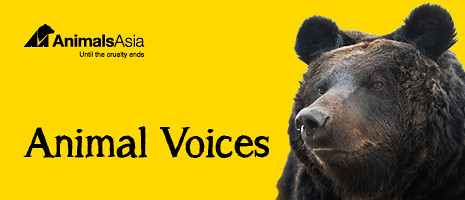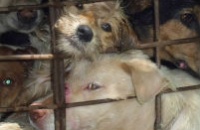Four horses dead already at Cheltenham Festival – you bet they suffer
17 March 2016
By Dave Neale, Animals Asia, Animal Welfare Director
To you it could be an innocent “flutter” to them it could be the last thing they do.
With the Cheltenham races under way this week in the UK, and four dead horses already, spare a thought for those that will never make it out alive from the racecourse, and the suffering that takes place behind the scenes within the racing industry.
In reaction to these most recent deaths, Jenny Hall, the British Horseracing Authority’s chief veterinary officer said:
“We are sad to hear of the fatal injuries received today by The Govaness, Pont Alexandre and Rezorbi. Our thoughts are with the owners, trainers and all the staff who have cared for these horses.”
But the fact that this continues suggests the industry’s thoughts are not yet concerned with the horses themselves. Since 2007, 22 horses have died at the festival.
If there were big winners on these opening days – it’s clear that it’s the animals that are paying the ultimate price.
Racing horses is very big business and all too often there is little room for sentiment along the way. Over-breeding and over-supply of horses is commonplace within the industry, producing animals that are bred for racing but do not go on to compete, or leave the industry early due to illness or injury. A large proportion of horses that are deemed unsuitable for competitive racing, become injured, or are simply not considered fast enough, are euthanised or sold to slaughterhouses.
Mares are often forced into an unnatural pregnancy cycle with foals being weaned early to bring the mare back into the breeding cycle. Once the breeding mares and stallions become too old, they are all too often discarded as another by-product of “producing the ultimate winner”.
For those that make the grade, many thousands will meet a premature end. Online racing statistics document the death of over 250 horses during races in the UK alone in 2012. Some 38% of these fatalities result from broken legs, backs, necks, pelvis, heart attack, or burst blood vessels. The New York Times estimates on average, 24 horses die each week at racetracks across America, resulting in over 1,200 deaths per year.
For horses that complete their race, the likelihood of them finishing with blood in their lungs is high. The exertion of the race often leads to a condition known as exercise-induced pulmonary haemorrhage, a condition that causes the horse to bleed into their lungs and windpipe. A study carried out by the University of Melbourne found that 50% of racehorses had blood in the windpipe, and 90% had blood deeper in the lungs.

To push horses to this point a jockey relies on his whip. Using whips causes pain and suffering to horses, both directly and if they cause horses to exercise beyond their capability. Advocates of the whip say that it is used for “safety”, “encouragement” and “correction”. The reality is that exhausted horses are whipped to force them to keep running, with many horses being whipped out of sheer frustration on the part of their jockey. Whip use has also been shown to increase the risk of a horse falling, potentially leading to further suffering.
Any activity that requires a person to have a tool to essentially force an animal into doing something that it does not already do (i.e. to run faster), has to be brought into question from both an ethical and a welfare standpoint. If horses want to run at such speeds then why is there a need to use a whip to “encourage” them to run even faster? There is only one reason and this is greed brought about by the need to win at the expense of the horse.
In the last 10 years, 65 horses have died at the Cheltenham races. With the horses lining up for the Cheltenham Gold Cup on tomorrow (18 March, 2016), more horse deaths are inevitable.
Please do not support this with your money, please do not bet on their suffering.
This is an update of an article that first appeared on this site April 10, 2015.
BACK






 Healing the hidden wounds
Healing the hidden wounds
 Early summer awakening at the China Bear Rescue Centre
Early summer awakening at the China Bear Rescue Centre
 5 reasons the dog meat trade must end
5 reasons the dog meat trade must end